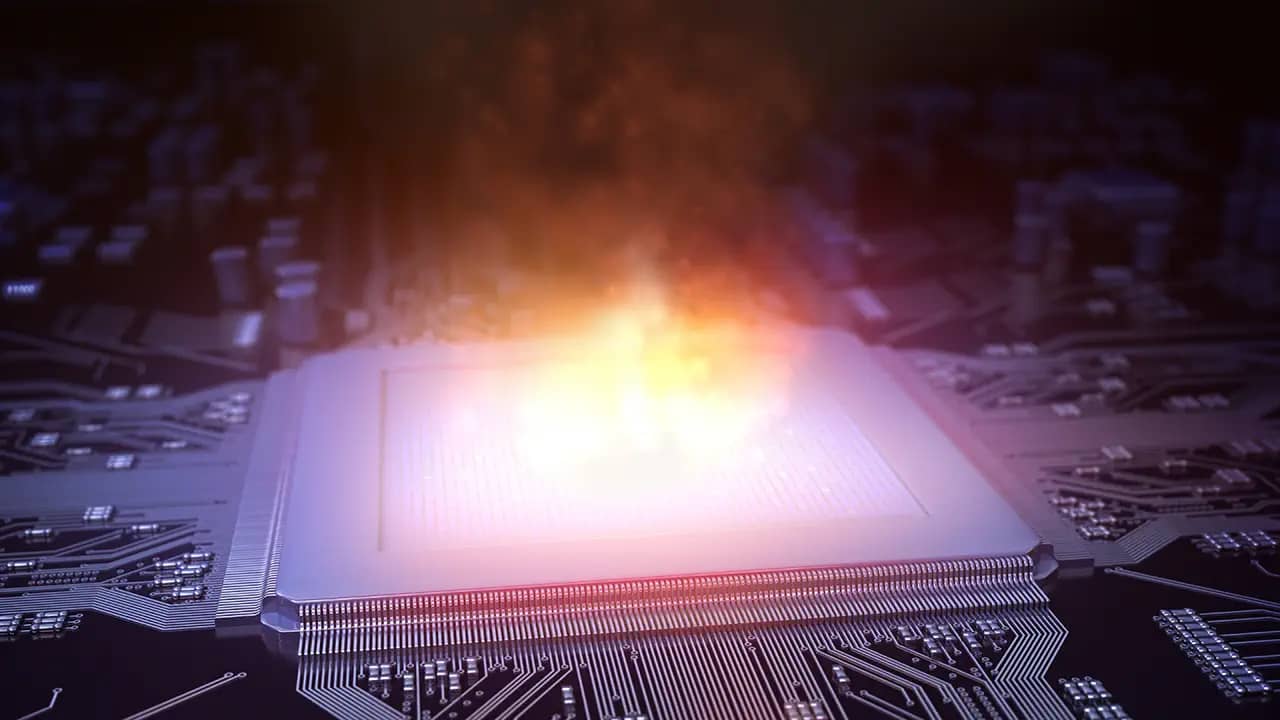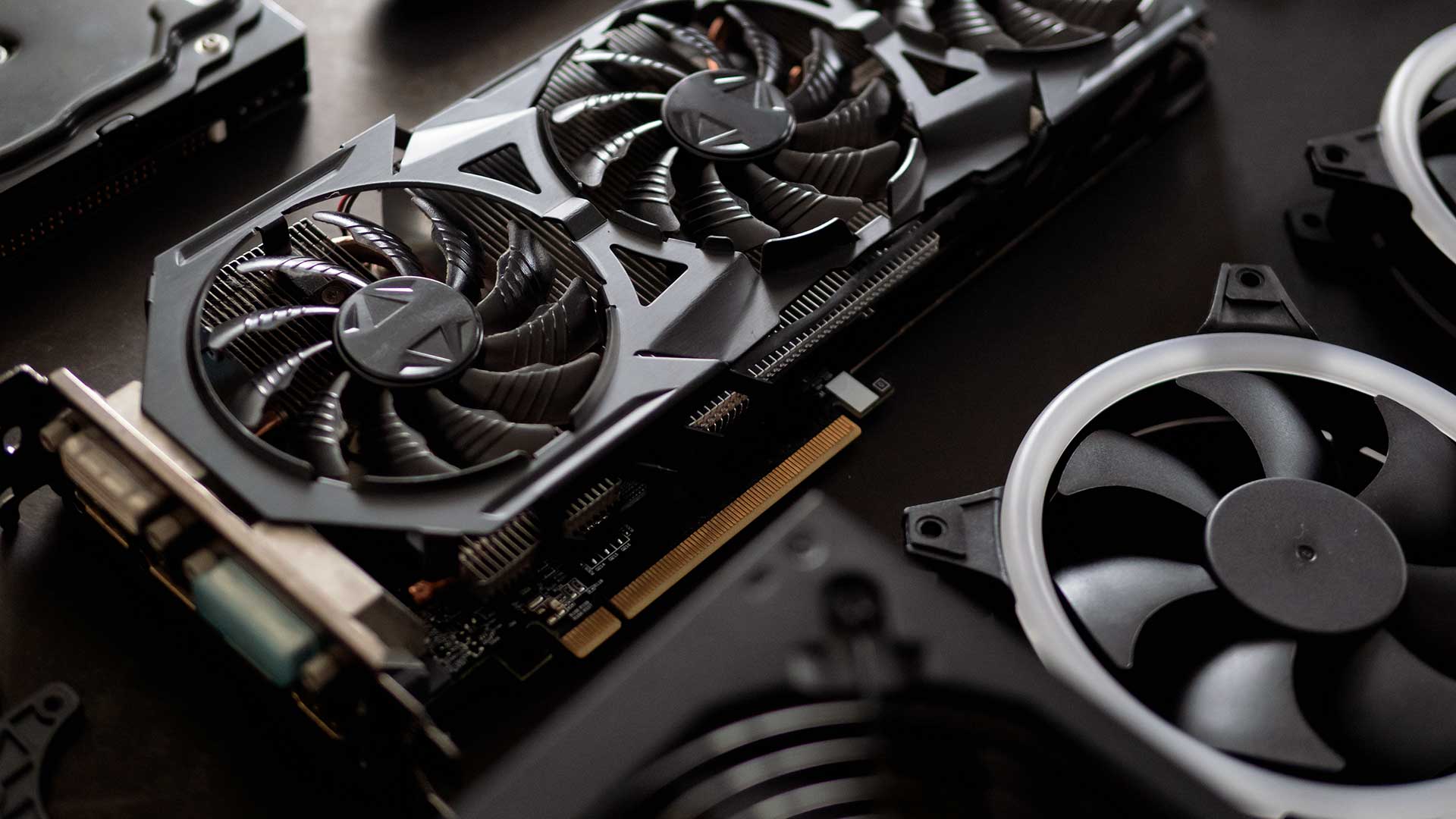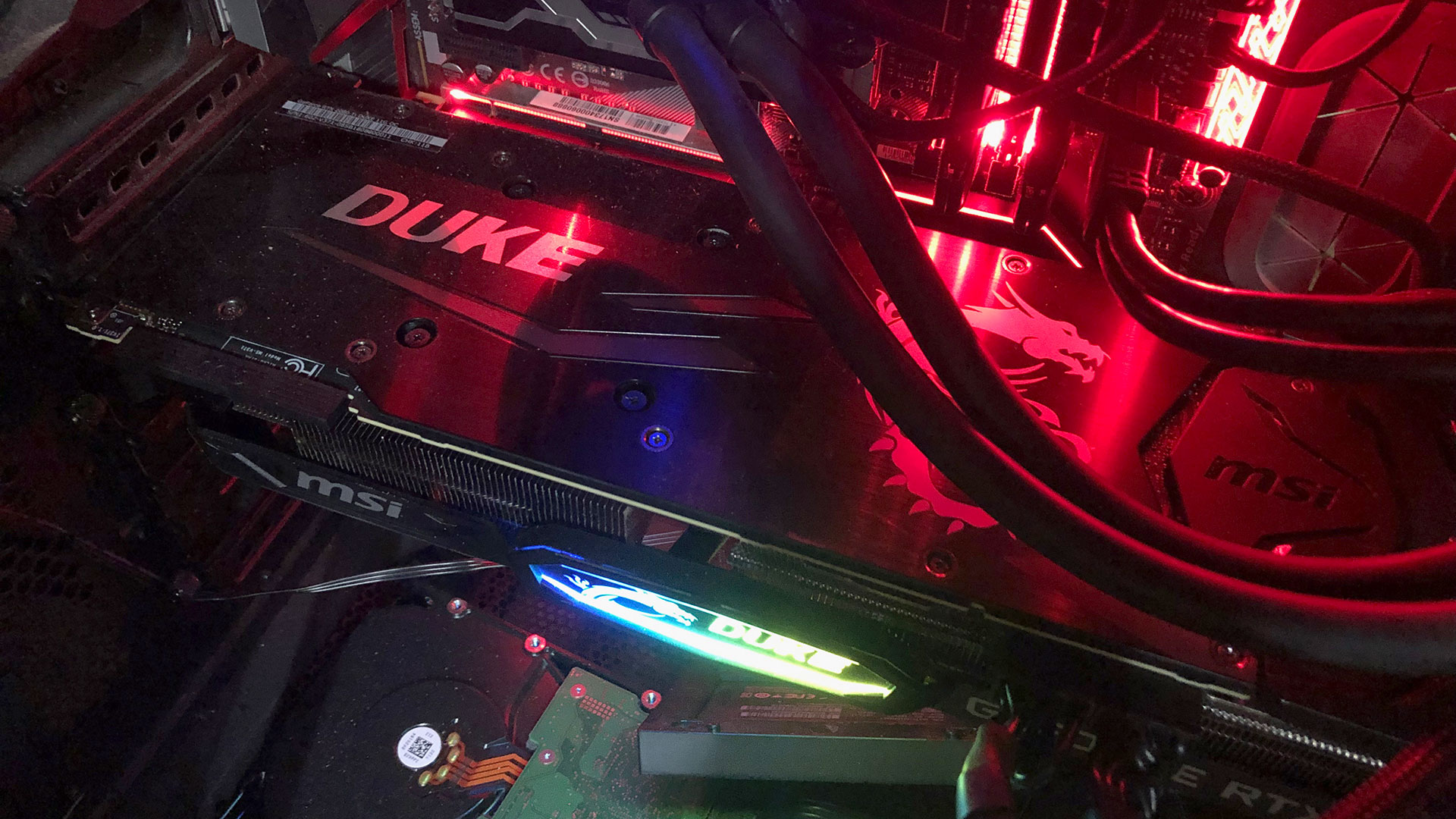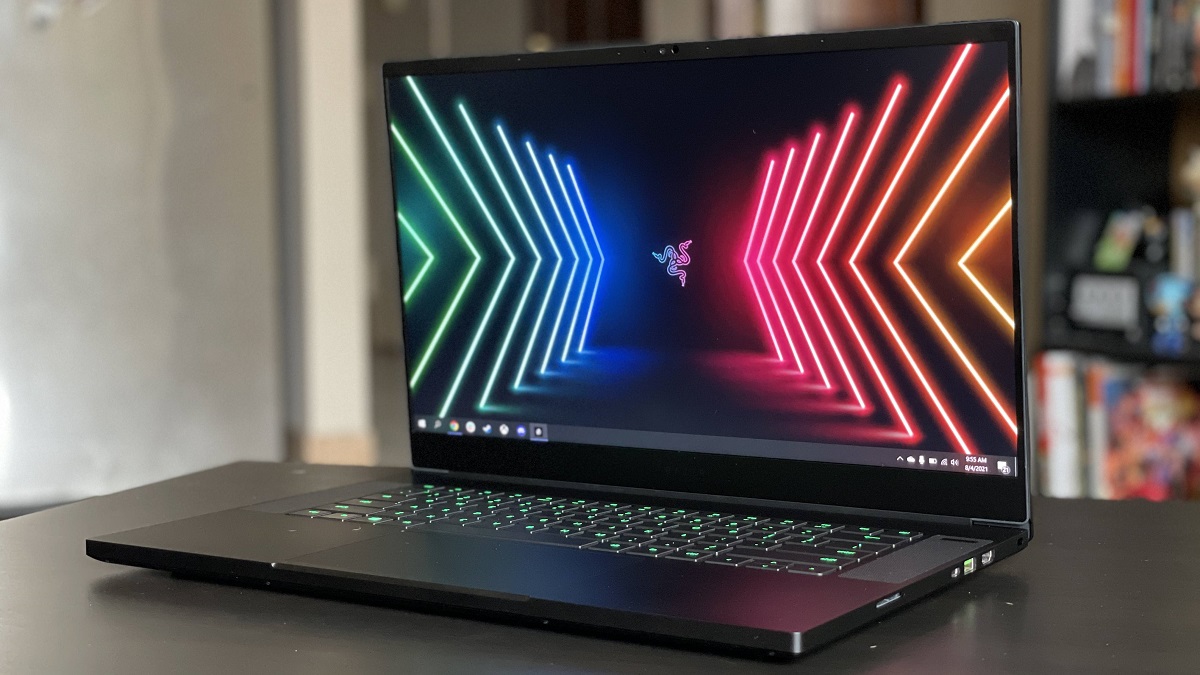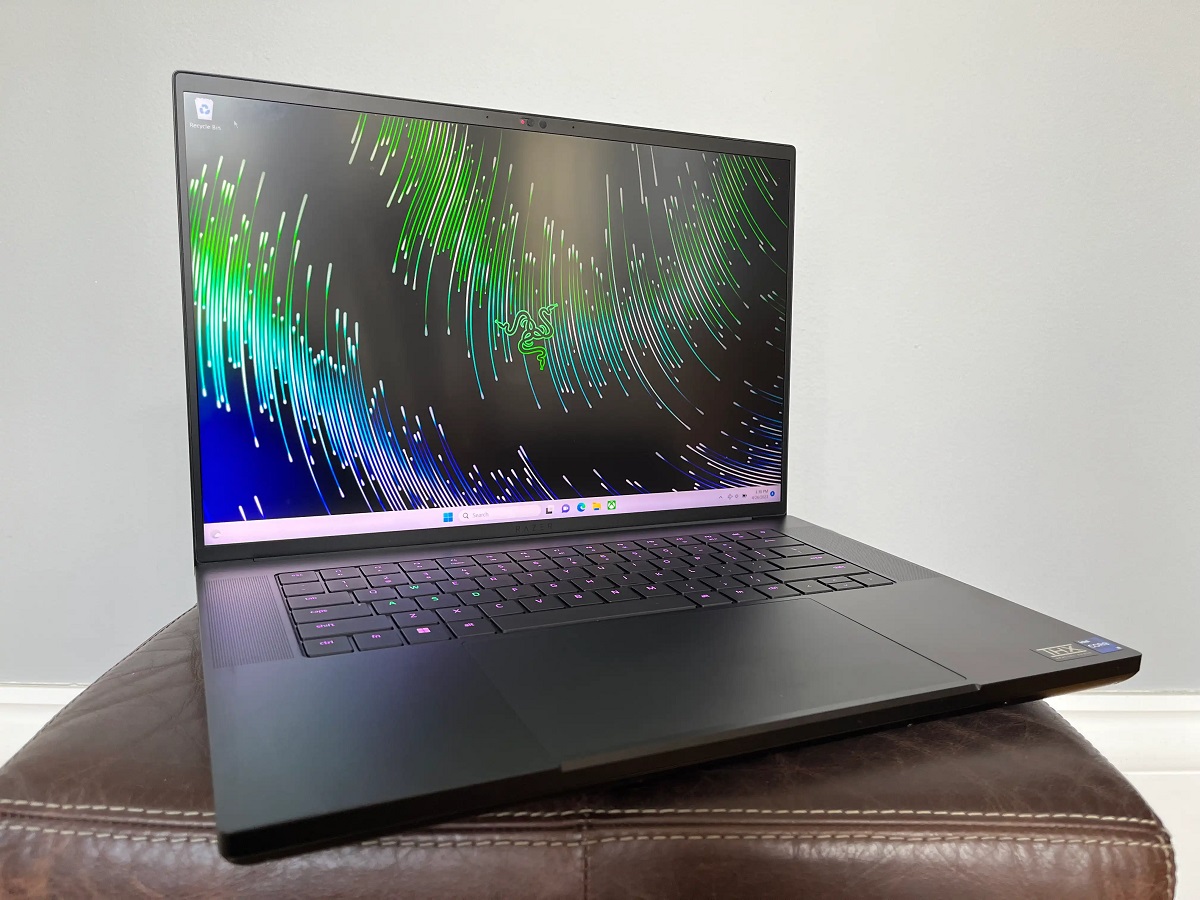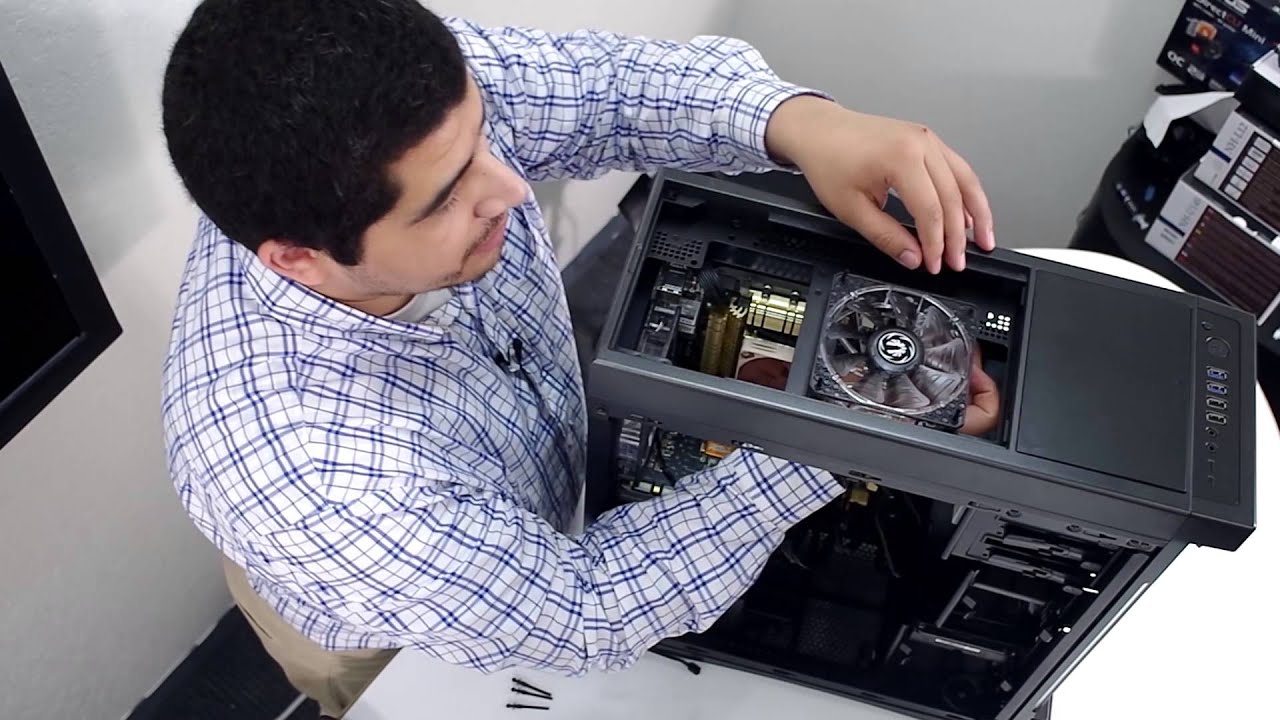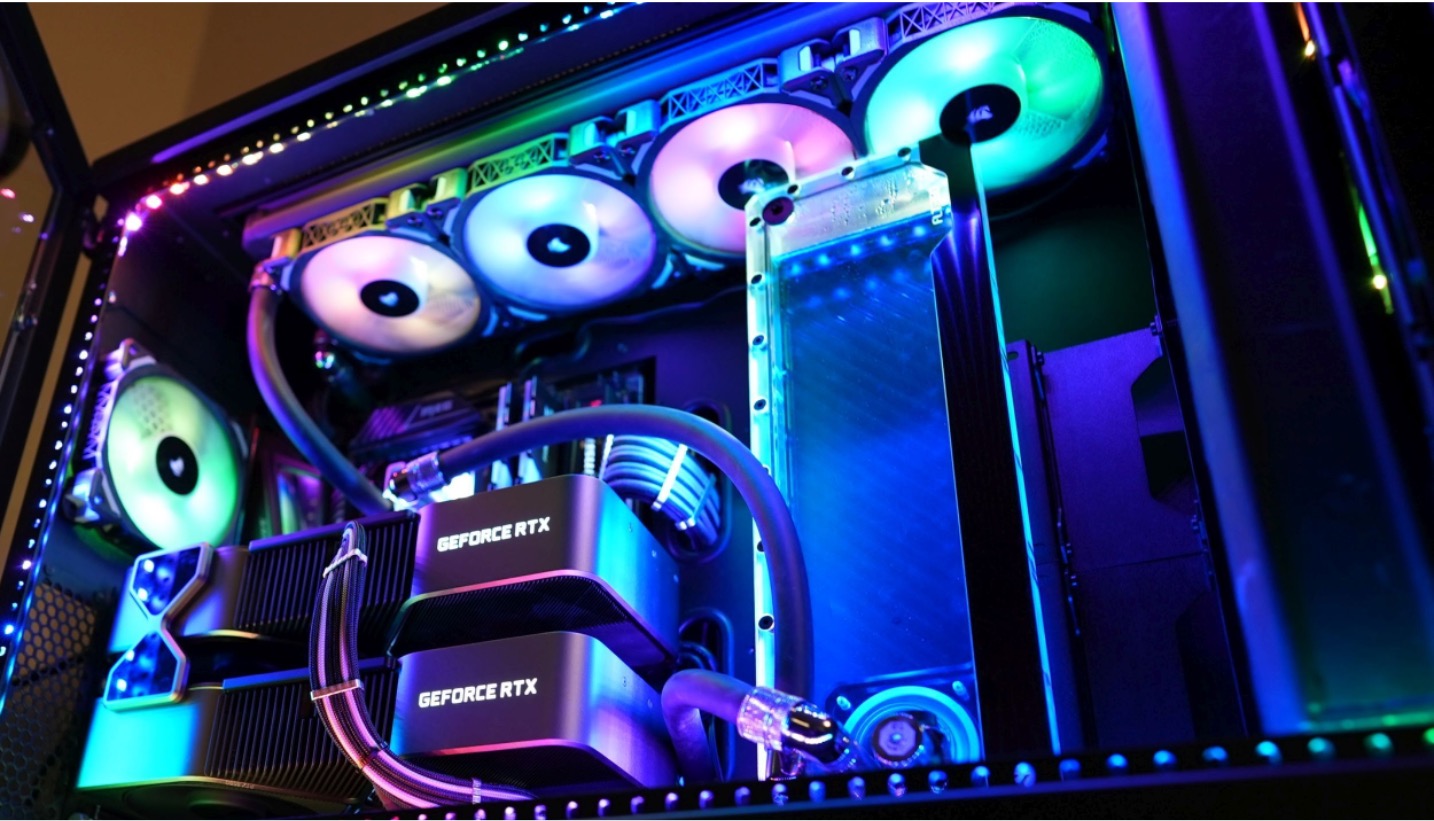Introduction
A graphics card is an essential component of any computer system, responsible for rendering graphics and ensuring smooth performance in demanding tasks such as gaming, video editing, and 3D modeling. However, like any other electronic device, graphics cards generate heat as they operate. This can lead to a rise in temperature, potentially affecting its performance and longevity.
Understanding the optimal temperature range for a graphics card is crucial for maintaining its optimal functioning and avoiding potential damage. While some users may assume that the hotter a graphics card gets, the better it performs, this is not always the case. Excessive heat can be detrimental to the performance and lifespan of the card, leading to degraded performance, system crashes, or even permanent damage.
In this article, we will explore the optimal temperature range for graphics cards and discuss the importance of keeping them within this range. We will also delve into the factors that affect graphics card temperature, signs of overheating, how to monitor temperature, and tips to keep the card’s temperature in check. By understanding these aspects, you will be better equipped to optimize the performance and longevity of your graphics card.
What is the Optimal Temperature Range for Graphics Cards?
The optimal temperature range for graphics cards generally falls between 60°C and 85°C. This range provides a balance between performance and safety. While the specific temperature threshold may vary depending on the manufacturer and model of the graphics card, it is crucial to keep the temperature within this range to ensure optimal functioning.
Operating the graphics card within the optimal temperature range allows for efficient and reliable performance. Temperatures below 60°C may indicate that the card is not being utilized to its full potential, leading to lower frame rates and decreased overall performance. On the other hand, temperatures exceeding 85°C can pose a risk of thermal throttling, where the card automatically reduces its clock speed to prevent overheating. This results in a decrease in performance and can lead to instability or system crashes.
Although most graphics cards can withstand higher temperatures, prolonged exposure to temperatures higher than the recommended range can shorten the lifespan of the card. Over time, high temperatures can cause degradation of the card’s components, leading to potential hardware failures.
It is important to note that different graphics cards may have different cooling capabilities and temperature thresholds. High-performance graphics cards such as those used in gaming or professional workstations often come with more robust cooling mechanisms, allowing them to operate at slightly higher temperatures without experiencing adverse effects. However, even with advanced cooling systems, it is still advisable to keep the temperature within the recommended range to ensure optimal performance and longevity.
Monitoring and controlling the temperature of your graphics card is crucial to maintaining its ideal operating conditions. In the following sections, we will explore the factors that can affect graphics card temperature, signs of overheating, and methods to monitor and control the temperature for optimal performance.
Why Does the Temperature of a Graphics Card Matter?
The temperature of a graphics card plays a significant role in its overall performance and longevity. When a graphics card operates within the optimal temperature range, it can deliver peak performance and maintain stability. Here are several reasons why the temperature of a graphics card matters:
1. Performance: Heat is the enemy of performance. When a graphics card operates at higher temperatures, its performance can be hindered. Excessive heat can cause the card’s components, such as the GPU (Graphics Processing Unit), to throttle down, reducing clock speeds and ultimately affecting frame rates and overall performance. Keeping the temperature within the optimal range ensures that the graphics card can function at its best.
2. Reliability and Longevity: High temperatures put stress on the components of a graphics card, potentially leading to premature wear and tear. Over time, this can result in system instability, crashes, or even permanent damage. By maintaining a proper temperature range, you can extend the lifespan of your graphics card and avoid costly repairs or replacements.
3. Thermal Throttling: When a graphics card reaches a certain temperature threshold, it may activate thermal throttling. Thermal throttling is a self-protection mechanism implemented by graphics cards to prevent overheating. When thermal throttling occurs, the card reduces its clock speeds to decrease heat production. While this protects the card from critical temperature levels, it also leads to decreased performance. Keeping the temperature within the optimal range minimizes the likelihood of thermal throttling, allowing the graphics card to perform at its maximum potential.
4. Stability: Overheating can cause system instability, leading to frequent crashes, freezes, or unexplained errors. When a graphics card operates within the recommended temperature range, it ensures system stability and uninterrupted performance during demanding tasks such as gaming, video rendering, or 3D modeling.
5. Energy Efficiency: Higher temperatures can result in increased power consumption, as the card needs to work harder to cool itself down. Operating a graphics card within the optimal temperature range can help maintain energy efficiency and reduce power consumption, leading to lower electricity bills and a more sustainable computing experience.
By paying attention to the temperature of your graphics card and taking steps to keep it within the recommended range, you can ensure optimal performance, reliability, longevity, and energy efficiency. In the following sections, we will explore the factors that can impact the temperature of a graphics card and provide tips on how to monitor and control it effectively.
Factors that Affect Graphics Card Temperature
Several factors can influence the temperature of a graphics card. Understanding these factors is essential for effectively managing and controlling the temperature to ensure optimal performance and longevity. Here are the key factors that can affect the temperature of a graphics card:
1. Ambient Temperature: The ambient temperature of the room where your computer is located can have a significant impact on the temperature of the graphics card. A higher ambient temperature will make it more challenging for the card’s cooling system to dissipate heat effectively, leading to higher operating temperatures. Therefore, it is important to ensure proper ventilation and cooling in your computer’s environment.
2. Cooling System: The effectiveness of the cooling system implemented in your graphics card plays a crucial role in temperature management. Advanced graphics cards often come equipped with cooling solutions such as fans, heatsinks, and even liquid cooling systems. Ensuring that your cooling system is clean, free from dust, and functioning properly is vital for maintaining optimal temperatures. Regularly cleaning and maintaining your graphics card’s cooling components can help improve heat dissipation and reduce temperatures.
3. Overclocking: Overclocking, the process of increasing the clock speeds of the graphics card’s core and memory, can significantly raise its operating temperature. Overclocking pushes the card’s components beyond their default specifications, resulting in increased power consumption and heat generation. If you have overclocked your graphics card, it is essential to monitor its temperature more closely and ensure that it remains within safe limits to avoid overheating.
4. Airflow and Case Cooling: Proper airflow within your computer case is critical for effective heat management. Insufficient airflow can lead to heat buildup around the graphics card, which raises its temperature. Ensuring that your case has proper ventilation, strategically placed fans, and clear pathways for air circulation can help maintain lower graphics card temperatures.
5. Workload and Usage Patterns: The workload and usage patterns of your graphics card also influence its temperature. Running resource-intensive applications or playing graphically demanding games will put more stress on the card, causing it to generate more heat. Similarly, extended periods of high GPU utilization can result in higher temperatures. Monitoring the temperatures during heavy usage and taking breaks or adjusting settings when necessary can help manage the card’s temperature effectively.
6. Quality of Thermal Paste: The thermal paste between the GPU and the cooling solution plays a crucial role in heat transfer. Over time, the thermal paste can degrade or dry out, leading to reduced heat dissipation and higher temperatures. Checking and replacing the thermal paste periodically, following the manufacturer’s guidelines, can help maintain optimal temperatures.
By understanding and addressing these factors, you can effectively manage and control the temperature of your graphics card. In the next section, we will explore the potential consequences of a graphics card running at excessively high temperatures.
What Happens When a Graphics Card Gets Too Hot?
When a graphics card operates at excessively high temperatures, it can lead to various issues that can negatively impact its performance and overall lifespan. Here are some of the potential consequences of a graphics card running at dangerously high temperatures:
1. Reduced Performance: One of the immediate effects of a graphics card running too hot is a drop in performance. As the temperature rises, the card’s components, particularly the GPU, may throttle down to prevent overheating. This results in decreased clock speeds and reduced performance in graphics-intensive tasks such as gaming, rendering, or video editing.
2. System Crashes and Instability: High temperatures can cause system crashes, freezes, or unexpected reboots. When a graphics card overheats, it can trigger the protective mechanisms, such as thermal throttling or even triggering a fail-safe shutdown to prevent permanent damage. These sudden disruptions can lead to data loss, interrupted workflow, or frustrating gaming experiences.
3. Permanent Damage: Prolonged exposure to excessively high temperatures can cause permanent damage to the graphics card. Overheating can degrade the card’s components over time, resulting in potential hardware failures. This can lead to a complete breakdown of the card, requiring expensive repairs or replacement.
4. Increased Fan Noise: As the graphics card attempts to cool itself down, the cooling fans may spin at higher speeds, resulting in increased noise levels. Excessive heat can place additional strain on the cooling system, causing the fans to work harder to dissipate the heat. This can result in a loud and distracting noise, impacting the overall user experience.
5. Shortened Lifespan: Operating a graphics card at consistently high temperatures can significantly reduce its lifespan. Heat can cause electronic components to degrade faster, leading to premature wear and tear. By allowing a graphics card to operate outside the recommended temperature range, you may ultimately shorten its overall longevity.
It is important to note that modern graphics cards are designed with built-in safety features to protect against overheating. These safeguards, such as thermal throttling, can help prevent critical damage and ensure the card’s survival. However, relying solely on these protective measures is not ideal, as they will result in decreased performance and compromised user experience.
To avoid the potential negative consequences of a graphics card running too hot, it is crucial to take proactive measures to maintain optimal operating temperatures. The next section will outline some common signs of an overheating graphics card, helping you identify when your card may be running too hot.
Signs of Overheating Graphics Card
An overheating graphics card can exhibit various signs, indicating that its temperature has exceeded safe operating limits. Recognizing these signs is crucial in diagnosing and addressing potential overheating issues before they cause further damage. Here are some common signs to watch out for:
1. Artifacts and Visual Glitches: One of the noticeable signs of an overheating graphics card is the appearance of visual artifacts or glitches on your screen. These can manifest as distorted or flickering graphics, pixelated images, or random colors appearing where they shouldn’t be. These anomalies occur when the GPU is struggling to process graphics due to high temperatures.
2. Frequent System Crashes: If you experience frequent system crashes, unexpected reboots, or the “blue screen of death” while performing graphics-intensive tasks, it may be a sign of an overheating graphics card. Heat-related instability can cause the system to crash as the card tries to protect itself from further damage.
3. Excessive Fan Noise: When a graphics card is operating at higher temperatures, the cooling fans often spin at faster speeds to dissipate heat. This can result in an increase in fan noise, with the fans producing a noticeable whirring or buzzing sound. A constant high fan speed can indicate that the card is struggling to keep temperatures under control.
4. Performance Degradation: Overheating can significantly affect the performance of a graphics card. If you notice a sudden decrease in frame rates, stuttering, or lag during graphically demanding tasks, it could be an indication of an overheating issue. As the card heats up, it may automatically throttle down its performance to reduce heat generation, resulting in reduced performance.
5. System Freezes or Unresponsive Graphics: Overheating can cause the system to freeze, leading to unresponsive graphics or a complete screen freeze. This can happen during intense gaming sessions or when running resource-intensive applications. If your system becomes unresponsive and requires a force restart, it is important to investigate the temperature of your graphics card as a potential cause.
6. Visible Dust Build-up: Accumulated dust on the cooling components of the graphics card can hinder its ability to dissipate heat effectively, leading to increased temperatures. If you notice visible dust build-up on the cooling fans or heatsinks, it is important to clean them to improve airflow and ensure proper cooling.
It is worth noting that experiencing any of these signs does not necessarily indicate an overheating issue with your graphics card. Other factors, such as driver conflicts or software issues, can also cause similar symptoms. However, if you consistently observe one or more of these signs, especially during graphically demanding tasks, it is advisable to investigate and monitor the temperature of your graphics card.
In the next section, we will explore methods to monitor the temperature of your graphics card and ensure it stays within the optimal range.
How to Monitor Graphics Card Temperature
Monitoring the temperature of your graphics card is crucial for maintaining optimal performance and preventing overheating-related issues. Fortunately, there are various methods you can use to keep track of your graphics card’s temperature. Here are some effective ways to monitor the temperature:
1. Manufacturer’s Software: Many graphics card manufacturers provide dedicated software that allows you to monitor and control various aspects of your card, including temperature. Examples include MSI Afterburner, EVGA Precision X, or ASUS GPU Tweak. These software tools often provide real-time temperature readings, fan speed controls, and other relevant information specific to your graphics card.
2. Third-Party Monitoring Software: Alternatively, you can utilize third-party software that supports temperature monitoring for graphics cards. Popular options include HWMonitor, GPU-Z, or SpeedFan. These programs provide comprehensive system monitoring capabilities, including temperature readings for different hardware components, including the graphics card.
3. Task Manager: If you’re running Windows 10 or later, you can monitor the temperature of your graphics card directly from the Task Manager. Simply press Ctrl+Shift+Esc to open the Task Manager, click on the “Performance” tab, and then select “GPU” from the sidebar. Here, you will find real-time temperature readings of your graphics card.
4. Hardware Monitoring Devices: If you prefer a physical hardware solution, you can invest in a dedicated hardware monitoring device. These devices typically connect to the PCI Express slot and display real-time temperature and other system information on an onboard LCD or through software. Examples include NZXT’s Kraken G12 or the Corsair Commander Pro.
5. Overlay Software: Some software, such as MSI Afterburner or Rivatuner Statistics Server, allows you to display an overlay of GPU temperature and other performance statistics directly on your screen while gaming or performing graphics-intensive tasks. This provides real-time temperature monitoring without the need to switch between windows or open additional applications.
Remember to monitor the temperature of your graphics card during various tasks and workflows, especially when engaging in graphically demanding activities like gaming or rendering. By keeping an eye on the temperature, you can quickly identify any potential heating issues and take appropriate measures to prevent overheating.
In the next section, we will discuss practical tips to help you keep your graphics card temperature in check and maintain optimal performance.
Tips to Keep Graphics Card Temperature in Check
Managing and controlling the temperature of your graphics card is essential to ensure optimal performance and prevent overheating-related issues. Here are some practical tips to help you keep your graphics card temperature in check:
1. Ensure Proper Ventilation: Adequate airflow within your computer case is crucial for cooling your graphics card. Make sure that your case has proper ventilation, and that airflow is not obstructed by cables or other components. Consider installing additional case fans or using a case with improved airflow to enhance cooling.
2. Clean and Dust Your Graphics Card: Dust can accumulate on the cooling fans and heatsinks of your graphics card, hampering its ability to dissipate heat efficiently. Regularly clean your graphics card by using compressed air or an anti-static brush to remove dust and debris. This will help maintain optimal cooling performance.
3. Optimize Fan Speeds: Most graphics cards come with built-in fan control that adjusts fan speeds based on temperature. Ensure that the fan speeds are set to an appropriate level to maintain proper cooling. You can use manufacturer software or third-party utilities to adjust the fan curve or set a more aggressive fan profile if needed.
4. Avoid Overclocking: Overclocking your graphics card increases its power consumption and generates more heat. If you are experiencing high temperatures, consider reverting your graphics card to its default clock speeds and voltages. Avoid pushing your card beyond its intended limits unless you are confident in managing the resulting heat.
5. Improve Case Cable Management: Proper cable management can help improve airflow within your computer case. Organize your cables and ensure they are not blocking air pathways or impeding the fans’ intake or exhaust. This allows for better overall cooling, including for your graphics card.
6. Apply High-Quality Thermal Paste: The thermal paste between the GPU and the cooling solution is vital for efficient heat transfer. If you are comfortable with hardware maintenance, consider reapplying high-quality thermal paste to ensure optimal thermal conductivity. Follow manufacturer guidelines and tutorials when performing this task.
7. Avoid Placing the System in Warm Environments: Ensure that your computer is not exposed to excessive heat from external sources. Keep your system away from direct sunlight, heaters, or other heat-generating devices. Placing your computer in a cooler room can help maintain lower ambient temperatures, allowing for better cooling of the graphics card.
8. Consider Upgrading Cooling Solutions: If you have a high-performance graphics card, you may want to consider upgrading the cooling system. This can include adding aftermarket cooling solutions such as high-performance air coolers or even liquid cooling systems. Enhanced cooling solutions can significantly improve heat dissipation and keep temperatures lower.
By following these tips and maintaining an optimal temperature range for your graphics card, you can ensure stable and efficient performance, extend the lifespan of your card, and prevent potential overheating-related issues.
In the next section, we will address some common misconceptions about graphics card temperature that you should be aware of.
Common Misconceptions about Graphics Card Temperature
When it comes to graphics card temperature, there are several common misconceptions that can lead to confusion and misinformation. It is important to debunk these misconceptions to ensure a proper understanding of how temperature impacts the performance and longevity of graphics cards. Here are some common misconceptions:
1. Hotter is Better: One common misconception is that a hotter graphics card performs better. While it is true that certain components can handle higher temperatures, excessive heat can still have detrimental effects on a graphics card’s performance and lifespan. Operating within the optimal temperature range is crucial for ensuring reliable and efficient operation.
2. Maximum Temperature Rating is the Target: Another misconception is that the maximum temperature rating specified by the manufacturer should be the target temperature. The maximum temperature rating is the upper limit that the card can handle before encountering critical issues. It is best to aim for temperatures well below the maximum rating to provide a safe buffer and optimize performance.
3. Cooling is Not Necessary for Lower-End Cards: Some users may think that lower-end graphics cards do not require as much cooling as higher-end models. However, all graphics cards generate heat, regardless of their performance level. Proper cooling and temperature management are essential for all graphics cards to ensure longevity and prevent performance issues.
4. Running Hotter Extends Lifespan: It is a misconception that running a graphics card at higher temperatures can extend its lifespan. In reality, excessive heat can cause accelerated wear and tear on the card’s components, leading to potential hardware failures or reduced longevity. Keeping temperatures within the recommended range is vital for maintaining the card’s lifespan.
5. Stock Cooling is Sufficient for Overclocking: Stock cooling solutions provided with graphics cards are generally designed to handle the card’s default specifications. Overclocking increases power draw and heat generation, often requiring more robust cooling solutions. When overclocking, it is essential to consider aftermarket cooling options to maintain safe and stable temperatures.
6. Lower Temperatures Always Improve Performance: While high temperatures can affect performance, lower temperatures do not necessarily guarantee better performance. Graphics cards have pre-set thermal throttling mechanisms to prevent damage. Once temperatures exceed a certain threshold, the card will automatically reduce clock speeds, limiting performance to dissipate heat. Maintaining temperatures within the optimal range is key for maximizing performance.
It is important to separate fact from fiction when it comes to graphics card temperature. By understanding these common misconceptions, you can make informed decisions about temperature management and ensure the optimal performance and longevity of your graphics card.
In the final section, we will summarize the key points discussed in this article and reiterate the importance of maintaining the optimal temperature range for a graphics card.
Conclusion
Understanding the optimal temperature range for a graphics card and taking measures to maintain it is crucial for ensuring optimal performance, stability, and longevity. Operating a graphics card within the recommended temperature range of 60°C to 85°C strikes a balance between performance and safety.
Throughout this article, we have discussed various aspects of graphics card temperature. We explored the reasons why the temperature of a graphics card matters, the optimal temperature range, and the factors that can affect its temperature. Additionally, we covered the potential consequences of running a graphics card at excessively high temperatures, the signs of an overheating graphics card, and methods to monitor the temperature effectively.
We also provided practical tips for keeping the graphics card temperature in check, including ensuring proper ventilation, cleaning the card, optimizing fan speeds, and avoiding overclocking unless adequately cooled. Lastly, we addressed common misconceptions related to graphics card temperature to ensure accurate understanding.
By implementing these recommendations and staying vigilant about monitoring and controlling the temperature of your graphics card, you can optimize its performance, maximize its lifespan, and avoid potential overheating-related issues. Remember, managing the temperature of your graphics card is an essential aspect of maintaining a stable and efficient computer system.







